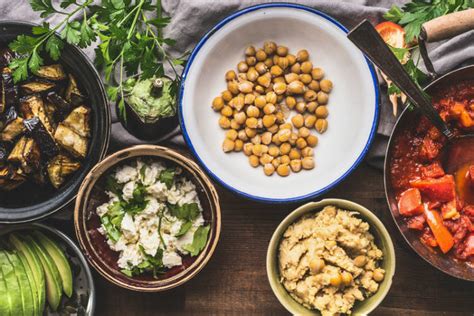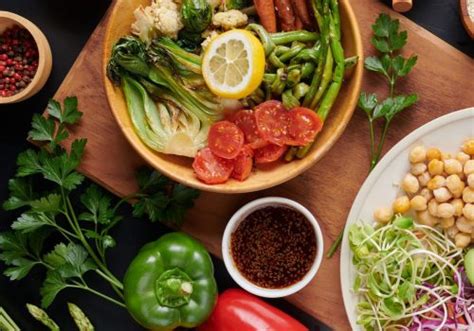Tacos have come a long way from their humble beginnings in pre-Columbian Mesoamerica to becoming a global culinary sensation. What started as a simple, versatile food has evolved into a symbol of cultural identity and culinary innovation, with countless regional variations across Mexico. As tacos crossed borders, they transformed through the influences of Tex-Mex cuisine and the creativity of fusion foods. Today, tacos are not just a meal but a cultural phenomenon that connects people worldwide. From street vendors in Mexico City to trendy food trucks in Tokyo, the taco’s journey reflects a story of migration, adaptation, and the universal love of good food.
xotools.xyz will guide you through an in-depth exploration of this topic.
1. The ancient origins of tacos in pre-Columbian Mesoamerica.
The origins of tacos can be traced back to pre-Columbian Mesoamerica, where indigenous groups, including the Aztecs and Maya, thrived on a diverse diet. Corn, a cornerstone of their agriculture, was used to create tortillas, forming the base for what we now know as tacos. These early tacos were basic yet practical: small, portable tortillas filled with local ingredients such as fish, insects, beans, and chili peppers.
Portable and adaptable, these meals were perfect for the working class, including farmers and miners, providing a practical way to eat without needing utensils. The tortilla wasn’t just a container; it was a symbol of nourishment and an essential part of daily life. Early accounts and illustrations show that tacos were used not only for personal meals but also in rituals and ceremonies, revealing their cultural importance. This long-standing tradition paved the way for the taco’s evolution over time, weaving it deeply into the fabric of Mexican food and culture, and setting the stage for its global journey in the modern world.

2. The evolution and diversification of taco styles across Mexico’s regions.
The evolution of the taco reflects the rich tapestry of Mexican regional diversity. As different parts of Mexico contributed their unique ingredients, cooking techniques, and cultural influences, a multitude of taco styles and flavors emerged. Coastal regions are known for their fresh seafood tacos, often featuring fish or shrimp and accompanied by vibrant salsas and lime. Central Mexico boasts the iconic tacos al pastor, a culinary fusion born from the influence of Middle Eastern shawarma brought by Lebanese immigrants. These tacos feature marinated pork cooked on a vertical spit and are served with pineapple, onions, and cilantro, creating a truly unique and delicious experience.
Flour tortillas reign supreme in the northern states, where tacos filled with grilled meats like carne asada, a testament to the region’s ranching heritage, are a beloved staple. On the Yucatán Peninsula, cochinita pibil tacos, featuring slow-roasted pork marinated in achiote and citrus, wrapped in banana leaves, and cooked underground, offer a distinct culinary delight. Oaxaca, aptly dubbed the “Land of the Seven Moles,” boasts tacos adorned with rich, complex sauces crafted from local chiles and chocolate, showcasing the region’s unique culinary prowess.
The rich diversity of Mexican cuisine is reflected in the street vendors, markets, and taquerias scattered across the country. Each offers a unique taste of local tradition, showcasing the taco’s adaptability. These variations not only highlight the taco’s versatility but also its ability to celebrate and preserve the distinct regional identities within Mexico.

3. The spread of tacos to the United States through immigration and cultural exchange.
The journey of tacos to the United States gained momentum with the influx of Mexican immigrants in the late 19th and early 20th centuries. Drawn by periods of economic prosperity and political turmoil, these workers carried their culinary heritage, including the cherished taco, to American cities such as Los Angeles, San Antonio, and Chicago. While initially embraced by Mexican-American communities, the appeal of tacos extended to a wider audience as food trucks, street vendors, and modest family-owned taquerias brought this savory and convenient dish to the attention of intrigued locals.
Cultural exchange was a vital component of this evolution. The blending of Mexican taco traditions with local American ingredients and preferences resulted in new variations, such as the crispy shell tacos popularized in California. As Americans embraced tacos, they transcended their status as a mere food item, becoming a symbol of Mexican heritage and identity. This cultural fusion served to bridge gaps and cultivate a shared appreciation for this delicious and portable meal.

4. The rise of Tex-Mex cuisine and its impact on taco culture in America.
Tex-Mex cuisine, a blend of Mexican and American culinary traditions, profoundly influenced taco culture in the United States. Originating in the border regions of Texas, Tex-Mex combined Mexican cooking methods with American ingredients like beef, cheese, and wheat flour. This fusion led to the creation of innovative taco styles that appealed to American tastes, making tacos more widely available and popular throughout the nation.
A defining element of Tex-Mex cuisine is the hard-shell taco, a fried corn tortilla brimming with seasoned ground beef, shredded cheese, lettuce, and salsa. While distinct from traditional Mexican tacos, which favor soft corn tortillas and diverse fillings, the hard-shell taco has established itself as a beloved fixture in American fast-food establishments and home kitchens, firmly embedding itself within the nation’s culinary tapestry.
Taco Bell and other fast-food chains have played a significant role in popularizing Tex-Mex tacos, bringing them into the mainstream and establishing them as a staple in casual dining. While this Americanized version of tacos has been criticized for eclipsing traditional Mexican tacos, its undeniable contribution to the widespread appreciation and consumption of tacos in the United States cannot be ignored. This dynamic evolution underscores the adaptability and enduring popularity of this beloved food.
5. The globalization of tacos through fast-food chains and fusion cuisine.
The globalization of tacos has been driven by the growth of fast-food chains and the increasing popularity of fusion cuisine, making tacos a recognizable dish across the world. Major chains such as Taco Bell, which started as a small venture in California, have been instrumental in introducing tacos to global markets. By adapting the taco to suit fast-food conventions, focusing on convenience, affordability, and standardized flavors, these chains have contributed to the widespread acceptance of a simplified version of tacos, extending its reach far beyond its Mexican origins.
At the same time, the global culinary landscape warmly welcomed tacos, sparking a wave of innovative fusions that intertwined classic Mexican ingredients with local tastes. This led to culinary creations like Korean-inspired tacos filled with bulgogi and kimchi, or sushi tacos wrapped in seaweed, demonstrating the taco’s versatility as a perfect platform for chefs to explore cross-cultural flavors. This widespread embrace of tacos has not only brought them into the spotlight but also cultivated a wider appreciation for Mexican cuisine, emphasizing the taco’s duality as a adaptable food and a symbol of international culinary exchange.
6. The role of tacos in culinary diplomacy and cultural identity.
Tacos, once simply a beloved food, have evolved into a potent symbol of cultural identity and culinary diplomacy. In Mexico, they are more than just a meal; they embody a profound connection to heritage, family, and regional pride. Every taco whispers tales of tradition, local ingredients, and historical influences, solidifying its place as an integral part of Mexico’s national identity. As such, tacos offer a delectable avenue to share Mexican culture with the world, cultivating understanding and appreciation through the universal language of food.
Tacos have become a powerful force in culinary diplomacy, fostering global connection and understanding. From vibrant taco festivals to international food fairs and themed culinary exchanges, tacos serve as a platform for cultural expression, inviting people from diverse backgrounds to embrace the vibrant flavors and traditions of Mexico.
Tacos embody the immigrant experience, showcasing adaptation and resilience as they evolve in new environments. From the bustling taquerias of Mexico City to trendy fusion restaurants in New York, tacos possess a universal appeal that transcends borders. They represent culinary diplomacy, fostering cultural exchange, mutual respect, and a shared love for this versatile and flavorful dish.
7. The economic impact of the taco industry on local and global scales.
The taco industry exerts a substantial economic influence, both locally and globally, a testament to its widespread popularity and versatility. Locally, tacos contribute significantly to the economic well-being of many communities. Street vendors, small taquerias, and family-owned restaurants generate substantial revenue, providing jobs and supporting local economies. In cities across Mexico and the United States, tacos serve as a driving force in the foodservice sector, fostering entrepreneurial opportunities and enriching the cultural tapestry of neighborhoods.
The global taco industry has a significant economic impact, fueled by international franchises and fast-food chains. Major players like Taco Bell have expanded their reach across continents, creating a multi-billion-dollar industry. This expansion has ripple effects on global supply chains, from the production of agricultural ingredients like corn, beef, and spices to their distribution. These interconnected networks generate economic benefits for various sectors, highlighting the taco industry’s far-reaching influence.
The emergence of taco-themed food trucks and fusion cuisine invigorates local economies by attracting tourists and enriching dining experiences. Taco festivals and culinary events further amplify this economic impact by drawing visitors and promoting regional specialties. In essence, the taco industry exemplifies how a cherished culinary tradition can stimulate economic growth, generate employment opportunities, and shape global food trends.
8. The future of tacos as a culinary and cultural phenomenon in a globalized world.
The future of tacos as a culinary and cultural phenomenon in a globalized world looks bright and full of potential. With increased global connectivity, tacos are destined to evolve, embracing new flavors and ingredients from various cultures. This ongoing fusion will enhance the taco’s allure, making it an even more versatile dish that resonates with the diverse tastes of the world.
The taco’s evolution will be fueled by cultural exchange and culinary innovation, as chefs worldwide explore both traditional recipes and modern twists. This creative experimentation will position tacos at the vanguard of global food trends, guaranteeing their enduring popularity.
Furthermore, the taco’s power as a symbol of cultural identity and culinary diplomacy will endure, promoting cross-cultural understanding and appreciation. Its ability to evolve while remaining true to its origins will ensure its enduring place in the global culinary landscape, establishing it as both a cherished food and a potent cultural icon. Therefore, tacos are destined to remain a vital element of global gastronomy and cultural exchange.
Tacos have evolved from ancient Mesoamerican roots to become a global culinary icon, bridging cultures and influencing food trends worldwide. Their adaptability and rich cultural significance ensure they remain a beloved dish. As they continue to inspire innovation and cross-cultural exchange, tacos will undoubtedly hold a prominent place in the global food landscape.
xotools.xyz








